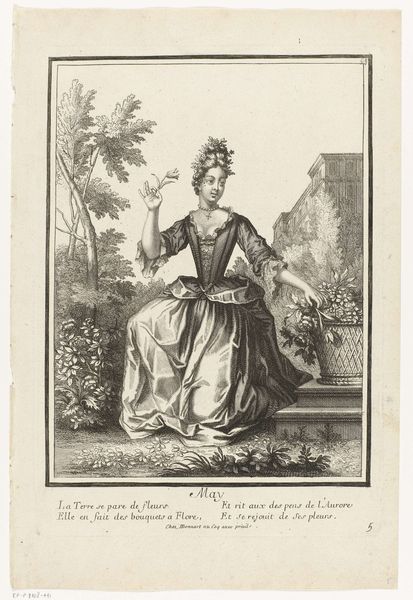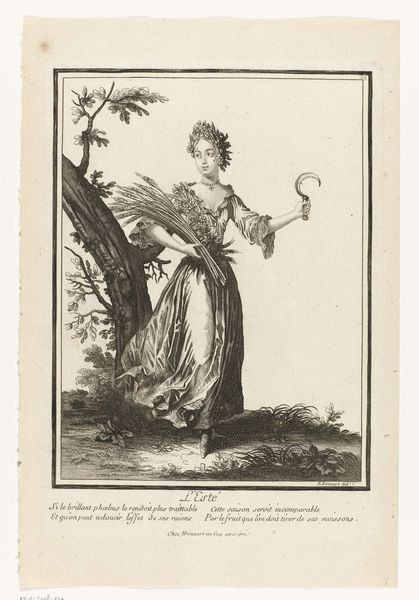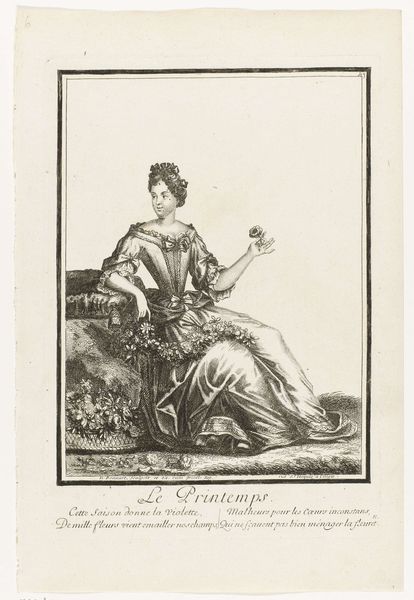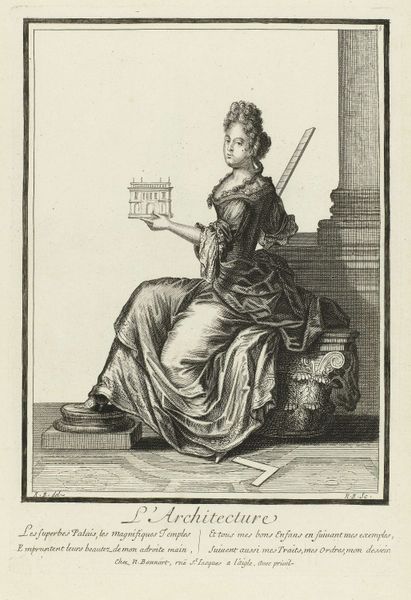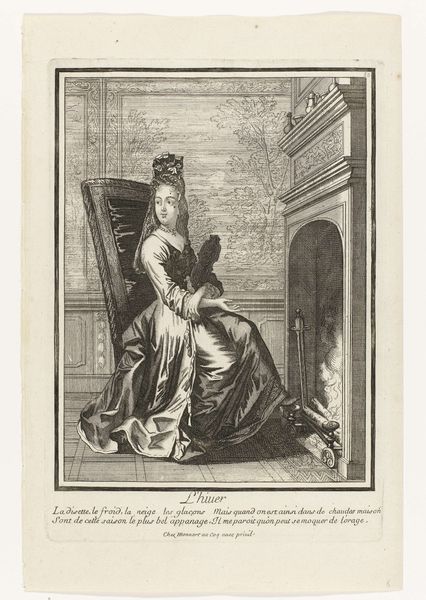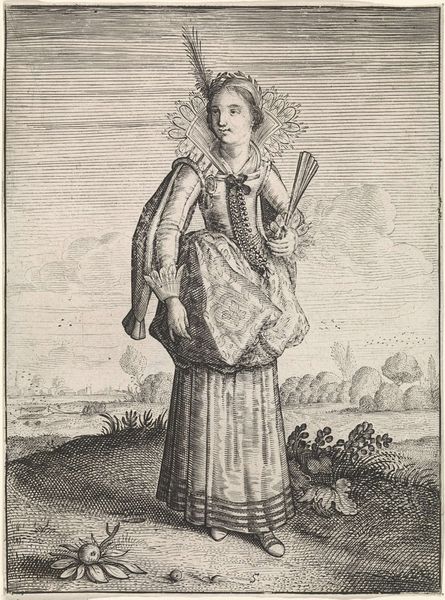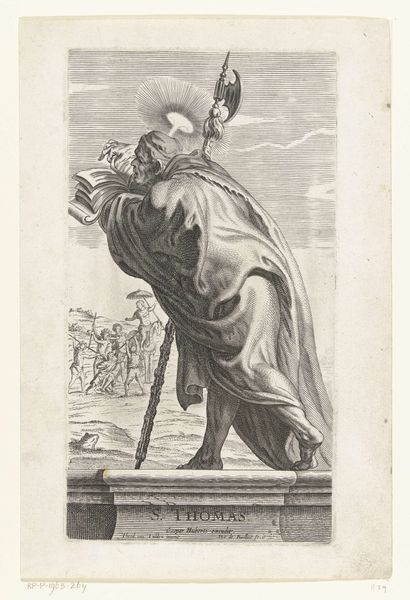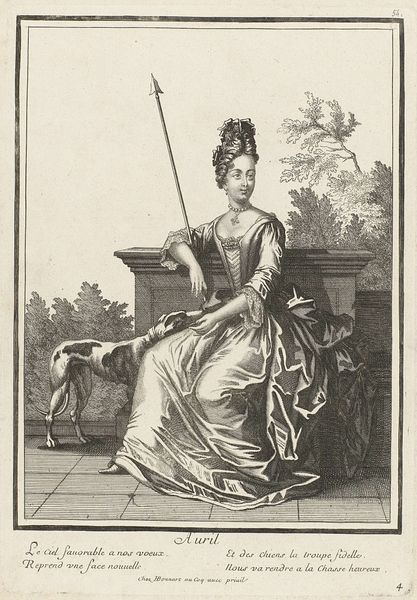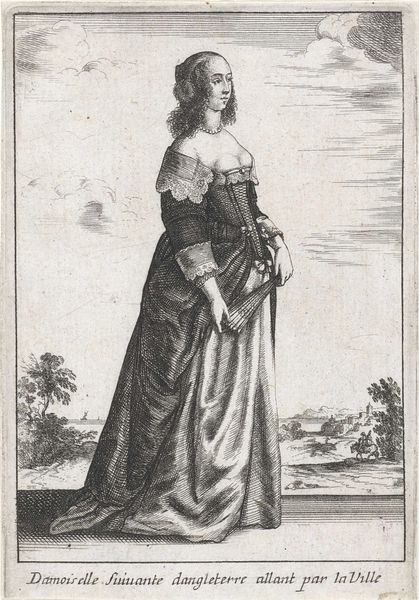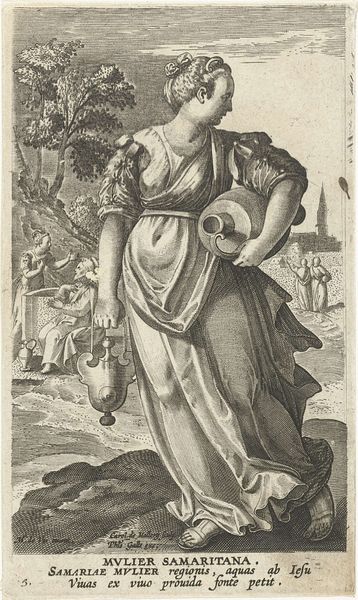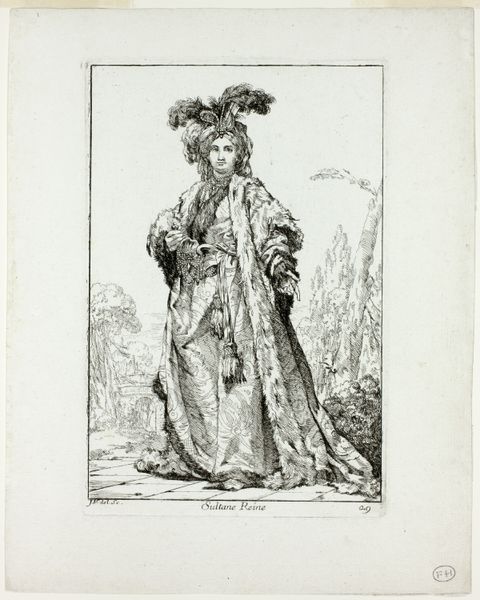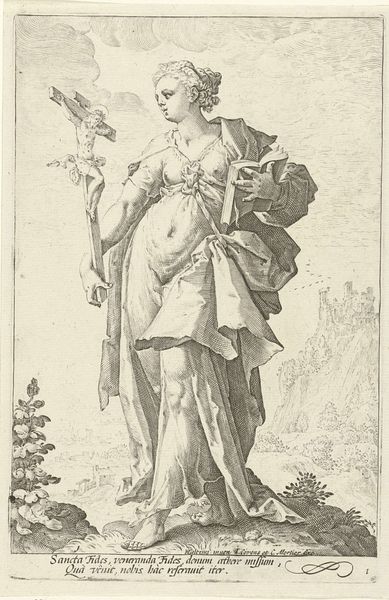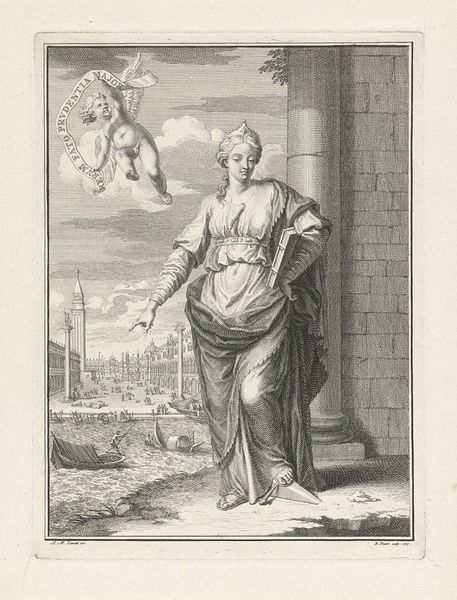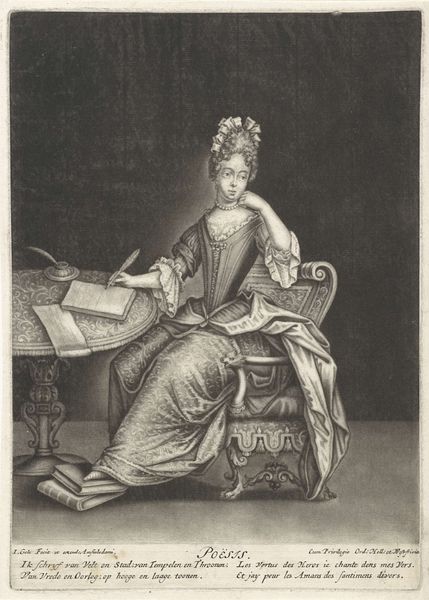
print, engraving
#
portrait
#
allegory
#
baroque
# print
#
old engraving style
#
engraving
Dimensions: height 268 mm, width 189 mm
Copyright: Rijks Museum: Open Domain
This print, titled "Zomer," was made by Nicolas Bonnart, sometime between the mid-17th and early 18th centuries. It is made using engraving, a process by which an image is incised into a metal plate, inked, and then printed onto paper. The image depicts summer as an allegorical figure, complete with a sickle and sheaf of wheat. Note the way Bonnart has used the lines of the engraving to create a sense of volume and texture in the figure's drapery, as well as the basket and field. Engraving was a highly skilled and labor-intensive process. The image would first have been carefully drawn onto the metal plate, before being painstakingly cut into the surface using a variety of specialized tools. The resulting prints were often luxury goods, prized for their detail and precision. By focusing on the material and process behind this print, we can begin to understand the social and cultural values that it embodies. Far from being a simple image, it is a testament to the skill and artistry of the engraver, as well as the complex relationship between art, labor, and commerce in early modern Europe.
Comments
No comments
Be the first to comment and join the conversation on the ultimate creative platform.
